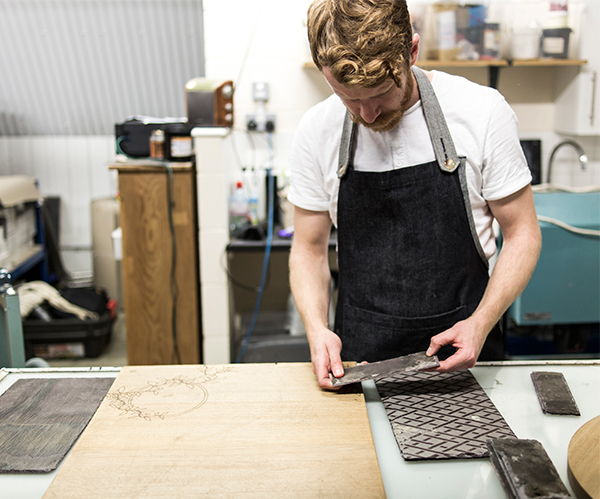Daniel Heath is an award-winning independent wallpaper, textile and surface designer. After training in silk screen printing at the Royal College of Art, he set up his East London studio in 2007 to create bespoke hand printed wallpapers and hand crafted interior surfaces.
Key to his work are the narratives he creates through drawings. He also has a particular interest in transforming old objects and materials with techniques such as laser engraving. We caught up with Daniel to discover the story behind his beautiful designs.
When and how did the re-appropriation of heritage materials first enter your designs and what made you decide to work in this way?
I started using re-appropriated materials when I began working with Retrouvius around 10 years ago. It was already something that was of interest to me, but Retrouvius has an ever-changing supply of heritage materials and architectural salvage that was made available for me to explore.

Maria Speake encouraged me to have a look around the warehouse and take away anything I thought I might be able to work with – this access to great materials, in plentiful but finite quantity, enabled me to develop new ideas and to translate imagery into new applications. It also helped that Retrouvius tasked me to work on some big projects with them, and that Maria provided vital mentoring to me at the beginning of my career, something for which I am forever grateful.
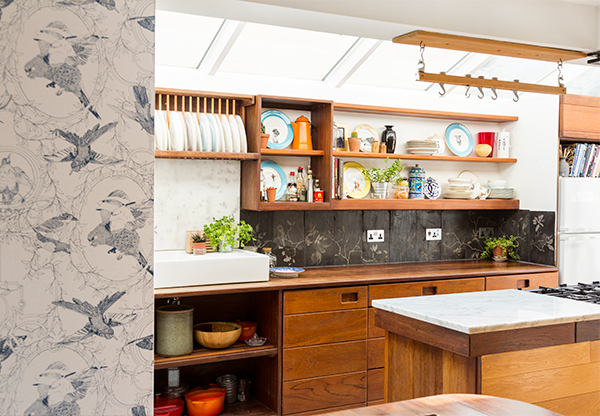
What kind of processes and techniques do you employ to transform old pieces?
My work stems from imagery and, primarily, drawing. Any techniques I employ tend to explore ways in which my imagery can be applied to, or cut into the material. Often the process is dictated by the material and how the imagery will look on the surface and how it will work alongside the material’s inherent aesthetic, colour or surface texture.
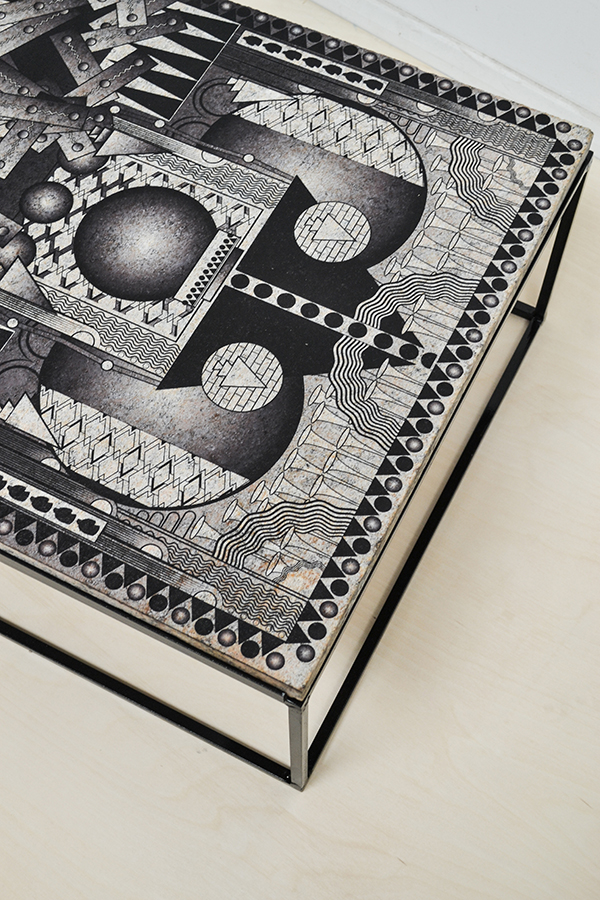
Additionally, there are practical considerations to make in terms of process suitability and the end use of the material. The last thing anyone wants is for the image to disappear over time! I currently use laser engraving a lot, but also digital UV printing alongside the more traditional screen printing for wallpaper, furniture and fabrics.
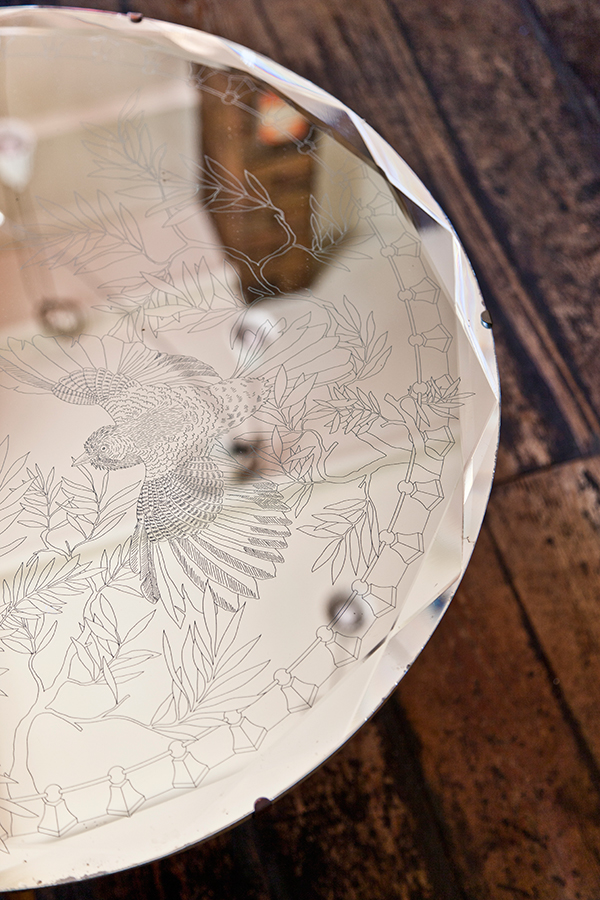
Where do you find inspiration for your illustrations and designs?
Inspiration usually comes from somewhere like a museum visit, or an article in National Geographic, travel or a documentary on TV. My starting point comes from something that is interesting to me, because I generate a lot of imagery and will need to read up on the subject extensively- this is not something you can easily do if you are not interested in the subject matter.
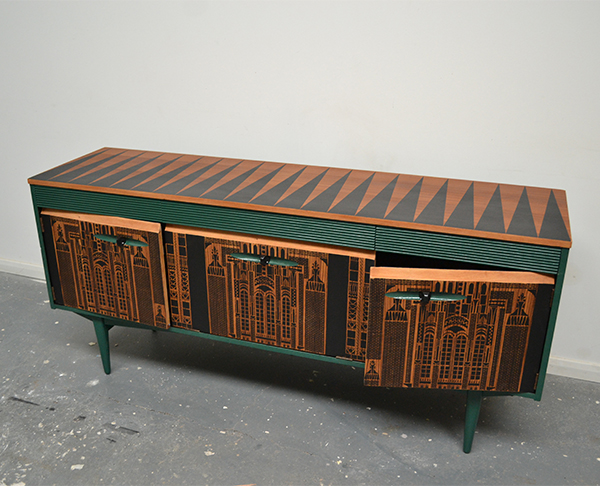
Do you think the reuse of salvaged, second hand and vintage objects/materials is something that will always feature in interior design, or is it a trend soon to be replaced by something else?
I think it will always hold on to its appeal, even in a niche, but the aesthetic and the way in which materials are used will evolve. There will be more sophisticated ways in which materials are reconstituted and new composites will emerge replacing plastics and other materials, through necessity, education, awareness of the consumer and fashion. These things are starting to emerge and are much slicker than their predecessors.
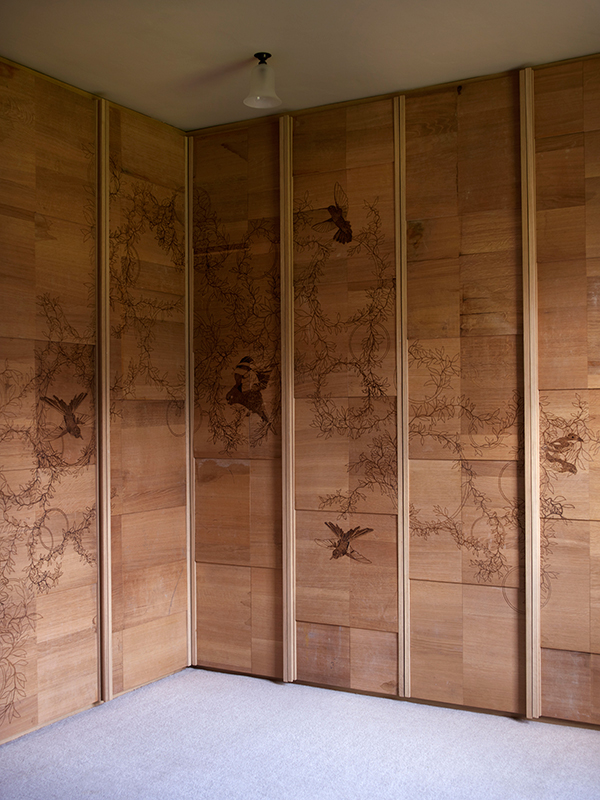
What is the most interesting reclaimed piece you’ve worked on?
I engraved some oak drawer bases that came from the Natural History Museum. When NHM had to update their archiving, storage and display in order to preserve the artefacts appropriately, all the Victorian cabinetry had to go, and much of it needed to be dismantled to remove it.Working with Retrouvius, we created an etched wall surface. For me, it was the provenance of the material that made it interesting, and so the imagery I created for it came from observations at NHM too. Some of the panels still had pencil notes that were scrawled onto the oak by the joiners decades before.

In addition to the upcycled pieces, what other eco-friendly practices do you incorporate into your manufacturing processes/business?
We make to order, minimising unnecessary waste. I source organic fabrics and try to source materials from within the UK where possible. We do not use plastic in our packaging, favouring paper and card that is much more easily recycled.

What projects/collaborations are you currently working on/have in the pipeline?
Thankfully, it is a very busy time. We are working on a few big projects that we cannot make public yet, but I am very excited about them going live! I am also working on a new wallpaper based on the Walthamstow Wetlands, close to where we live. I am continuing to work on more pieces for Money For Nothing, as I really enjoy the challenges they present and they are great fun to work on!
See more at www.danielheath.co.uk
PHOTOS
- Etched reclaimed slate tiles
- Daniel Heath in his studio
- Detail of Espalier etched reclaimed Welsh slate tiles for a kitchen in Kensal Rise £74/per tile. Photo by Tom Fallon.
- Kensal Rise kitchen featuring Taxidermy Birds silk-screen printed wallpaper £250 per 10m roll. Photo by Tom Fallon.
- Etched granite coffee table
- Swooping Jay mirror table
- Upcycled sideboard
- Wall panels made up of etched oak drawer bases sourced from the National History Museum. Photo by Jo Bridges.
- Eastern Peacocks wallpaper in copper and white on grey ground £350 per 10m roll
- Heronry etched mirror £225 with strap made from salvaged leather sourced from a Northampton shoe factory


